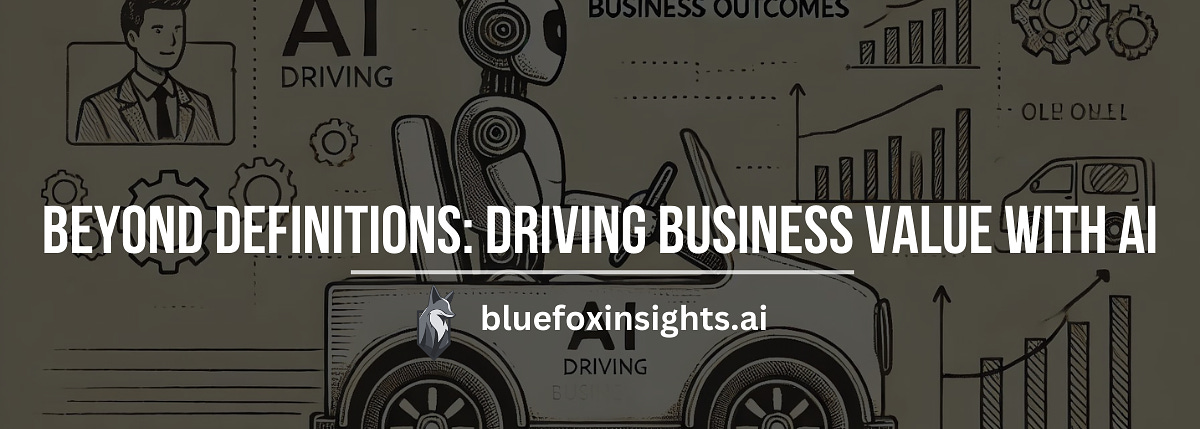Moving Beyond Definitions: Driving Business Value with AI
Too often, business leaders find themselves entangled in technical debates about the precise definition of artificial intelligence. Is it deep learning with neural networks, symbolic AI, or something else? While these discussions have their place, they can detract from a more pressing concern: how to harness AI to deliver tangible business value.
At its core, AI can be broadly defined as using computers to mimic human capabilities. This simple definition allows us to focus on the practical applications of AI rather than getting bogged down in technical specifics. It's essential to understand that the value AI brings to a business is not just in doing new and cool things for their own sake but in solving real business problems and improving processes.
Traditional vs. Modern AI: A Practical Perspective
Historically, AI was characterized by rules-based systems, or what we can call "Rules AI." An illustrative example is IBM's Deep Blue, which defeated chess grandmaster Garry Kasparov in 1997. Deep Blue's victory was the result of meticulously programmed rules and strategies, developed in collaboration with chess experts. This type of AI is highly interpretable and reliable when the set of rules is clear and manageable.
In contrast, modern AI, often referred to as "brain-inspired AI," relies on neural networks and massive amounts of data. Google's AlphaGo, which triumphed over a world champion Go player, exemplifies this approach. Instead of being programmed with explicit rules, AlphaGo learned from vast amounts of data, developing strategies through trial and error. This method allows for unprecedented creativity and adaptability but comes at the cost of interpretability and certainty.
Applying AI for Business Value
For business leaders, the choice between rules AI and brain-inspired AI depends on the specific application and desired outcomes:
Prototyping Solutions: If the process to be automated has a well-defined scope and clear rules, rules AI is likely the best choice. For instance, robotic process automation (RPA) effectively uses rules AI to streamline repetitive tasks.
Handling Complexity: When dealing with complex, data-rich environments where explicit rules are hard to define, brain-inspired AI shines. It can manage intricate processes and adapt to new information in ways that rules AI cannot.
Certainty vs. Innovation: In scenarios requiring 100% accuracy and compliance, such as regulatory reporting, rules AI's predictability is invaluable. However, for innovative applications where exploring new possibilities is critical, brain-inspired AI offers the flexibility and power to discover new solutions.
Balancing Old and New Techniques
To maximize business value, it's crucial to balance the use of traditional rules AI and newer brain-inspired AI. Relying solely on the latest technology can be tempting, but it's important to remember that tried-and-tested methods often provide the reliability and clarity needed for core business functions. As brain-inspired AI continues to evolve, its role in transforming businesses will grow, but it should complement, not replace, traditional approaches.
In conclusion, the focus for business leaders should be on applying AI technologies to generate real organizational value. By understanding and strategically deploying both traditional and modern AI techniques, businesses can navigate the complexities of AI and achieve meaningful advancements
.




